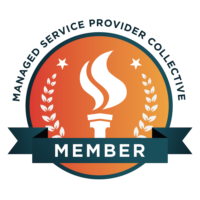Navigating Uncertainty in Government Grants- Strategies for Non-Profits
If there is one word that best defines the government grant environment in 2025, it’s uncertainty. Hundreds of grants have been or are being terminated or cancelled in the name of efficiency and cost savings, leaving non-profits, which historically have limited financial resources, struggling to meet their financial obligations and sustain operations.
Navigating the dynamic landscape of government grants demands proactive strategies, not passive waiting for government shifts. The time is now to take the initiative in securing funding for your organization.
Strategic grant procurement involves aligning your organization’s needs with the funding opportunities and funding restrictions that exist in today’s funding environment. The application process needs to craft compelling narratives and focus on the impact of your work that are in alignment with the current administration’s policies, positions and goals. Certain areas of past funding opportunities do not exist anymore and proposal language should be crafted to promote how the grant is going to help the current administration move its agenda forward.
Promote Your Organization’s Strengths
- Define your mission and goals: clearly articulate what your organization will achieve and what impact it will have.
- Identify your target audience: understand who your programs (work product) will serve as well as how the programs will help in addressing the problems or needs that are in the marketplace.
- Promote your strengths and resources: highlight your organization’s expertise, track record, partnerships and staff.
Identify Funding Opportunities
- Research: look for government agencies, corporations and foundations that align with your mission and target constituency.
- Analyze funding criteria: understand each funder’s priorities, target markets, programs and their requirements.
- Develop a funding strategy: create a master plan for funders that include what opportunities to pursue, how to approach each funder and how you will measure success during and after the end of the proposal cycle.
Craft Compelling Narratives
- Describe your organization, what solutions you offer and what impacts you have had and will have going forward.
- Quantify your achievements and explain how your programs have been effective and impactful in the market place.
Develop Strong Proposals
- Follow instructions: Always adhere to the guidelines and requirements of the funders application process.
- Create realistic budgets: prepare accurate financial projections with backup and justify the cost of the program(s).
- Provide data and metrics: demonstrate how your program will be effective and what the impacts will be.
Build Relationships
- Continuously follow up after submitting your proposal: stay engaged with the funder and be ready to answer questions and provide additional information and documentation.
- Seek feedback: ask the funders for feedback and constructive criticism on your proposal so you may incorporate their input into future proposals.
- Key contacts: Project Managers, Project Officers, Grant Specialists, Technical Monitors and Contract Administrators.
Web Presence
- Evaluate your website to reflect compliance with institutional and federal guidelines.
- Make changes to your website to align with government’ s policies, positions and goals.
Organizations should align their projects with government and other funder priorities and focus on areas where the funders want to spend money and should avoid areas that are politically-charged in the current landscape.












